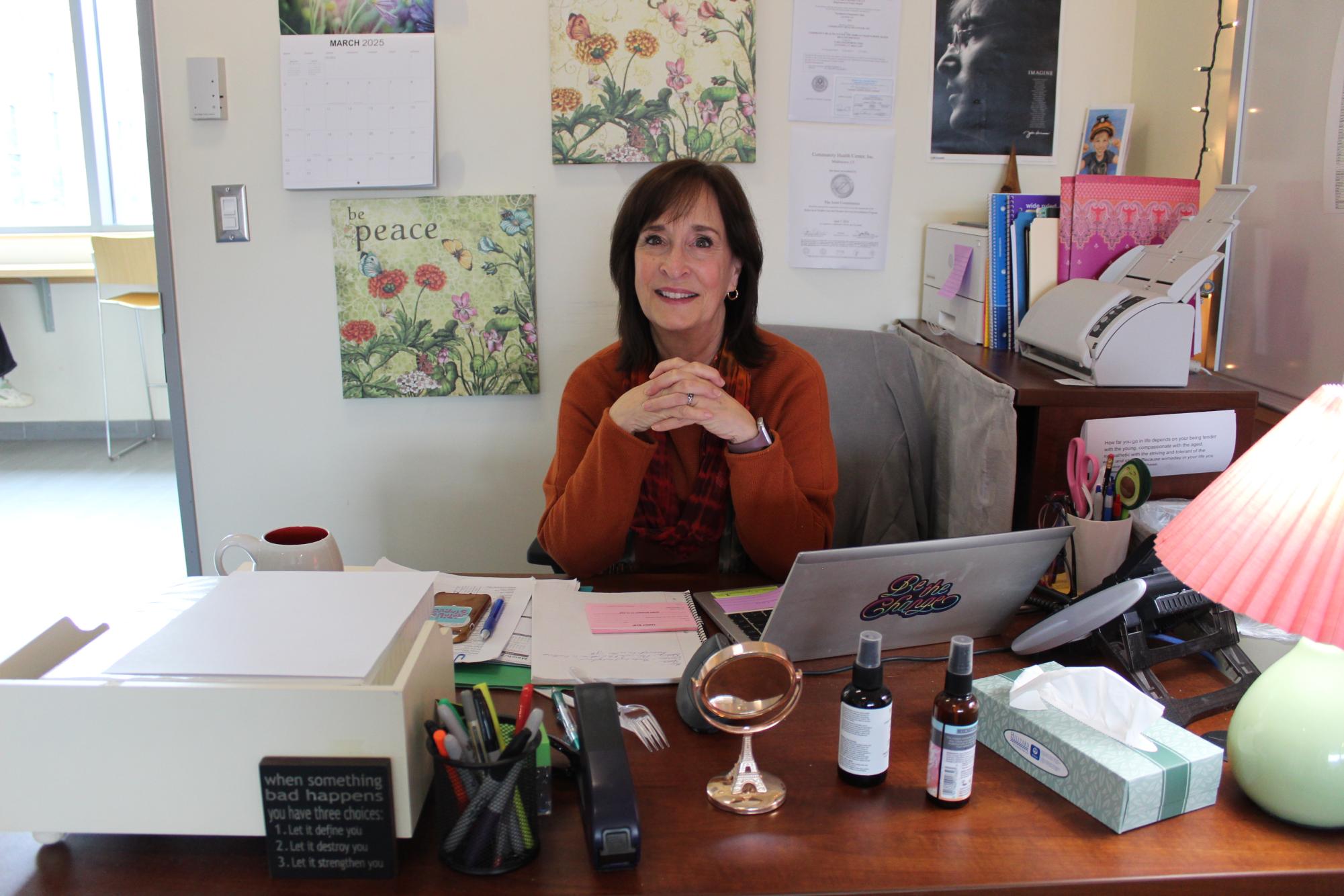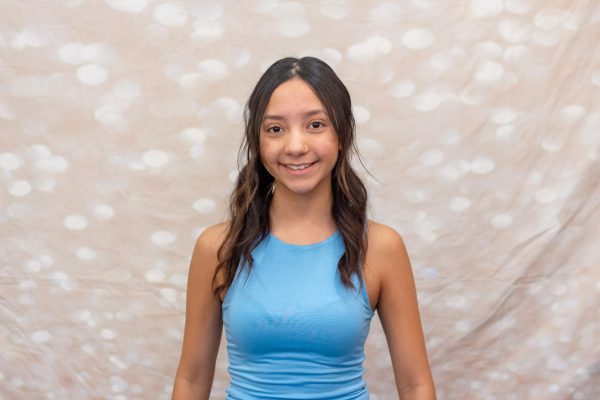Introduction:
Donna Olivieri’s office, room B22, is a quiet, cozy place for kids to just stop and breathe; to take an emotional break from their often hectic lives. On the back wall of the room is a grey, small comfy sofa with a tan and blue pillow where students, every day, sit down to debrief.
When Donna Olivieri, Morgan’s school therapist, came to Morgan 10 years ago, this is exactly what she wanted to create. “My goal is to provide students with a safe space and help them process any adjustments, life changes, fears, anxieties or struggles they may be experiencing,” said Donna Oliveri.
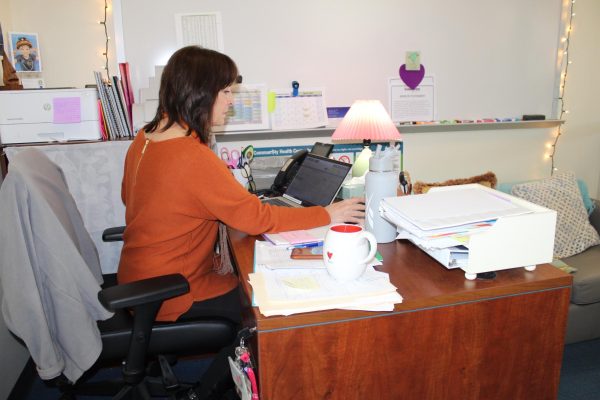
Background on Donna:
Donna Olivieri came to work at Morgan as part of the Community Health Center’s school-based program in November 2014. “It was a brand-new program offered to many towns throughout Connecticut, and Clinton was my first choice,” said Donna Oliveri, who goes by Donna with her students. Donna loves her job, but, for her, the best part is the students themselves. “I think high school can be a rough time for so many, and I love witnessing students’ emotional growth and strengths. I love being a peaceful part of that process for kids.”
High school can be a rough time for so many. Donna loves witnessing students’ emotional growth and strengths. “I love being a peaceful part of that process for kids,” Donna said.
Although Morgan has a wonderful support staff (guidance counselors, school psychologists and a school social worker) who can help kids address their academic and emotional concerns, Olivieri’s role is different; she works for an outside agency as a behavioral health specialist who provides in-depth therapy to students within the school building.
Students can rest assured that anything they tell her is confidential within the guidelines of safety. Her office is a safe space with no judgment. “My work allows a child to go a little deeper in their mental health journey.”
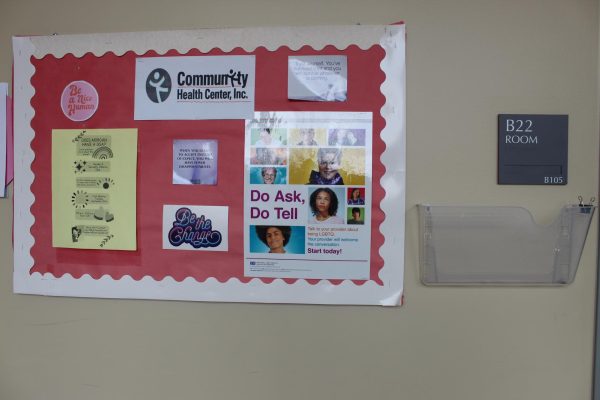
About the program:
The Referral process explained, before you can start meeting with Donna, you must be referred to the program. This can happen, by getting a referral sent by teachers or Donna. According to Principal Hagness, once parents and students have agreed to the referral sent home or emailed, the next step is a short interview, looking to see if the parents might agree that this is something that would probably do well for their child.
The first meeting with Donna is an intake with at least one parent present. Donna introduces herself and talks about her job. It takes about an hour, and it’s time for Donna to meet with the student and a parent or caregiver. She gathers data that will help her in her work with the student. She makes appropriate diagnoses (anxiety, for example) then there’s a development care plan. During this intake meeting, the parent / caregiver has to sign a lot of forms that allow her to do her work (for example, one form is a “Release of Information”). Once the intake is complete, and all the forms have been signed, Donna can start meeting the student privately (usually once per week).
This program is available year-round, even over the summer. Although the best time to get enrolled is usually in the beginning of the school year, students can enroll anytime. Students and families can find the enrollment application here: sbhc1.com Students can also email ([email protected]) with any questions, or speak with their guidance counselor about CHC’s school-based services.
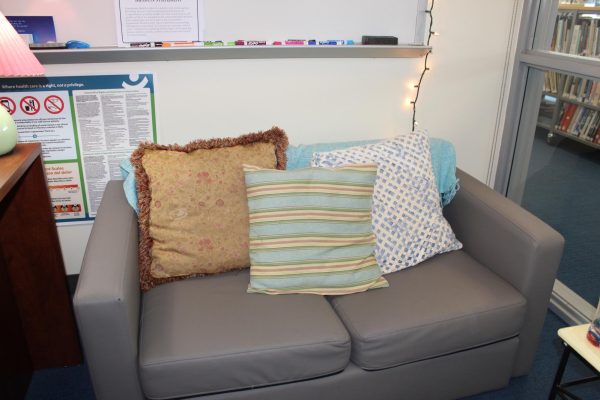
Benefits of the program:
Donna believes the strongest benefits students seem to see after therapy is their ability to organize their thoughts and feelings and to learn how to comfortably express themselves, and to identify areas where they would like to grow. “Some feedback I’ve received in the past included students feeling less stressed after a session, feelings of peacefulness after engaging in mindfulness activities, and just having someone who was unbiased to talk with,” Donna stated.
According to a recent study out of Mental Health America has shown talking to a therapist or counselor can help deal with thoughts, behaviors, stresses, goals, past experiences. Approximately 85% of people who have undergone therapy see benefits and improved mental health. “People with mental health conditions often find psychotherapy-or talk therapy-very helpful.” Therapy can help with problems in your life and help release emotions.
https://mhanational.org/resources/therapy
sbhc1.com
[email protected]


